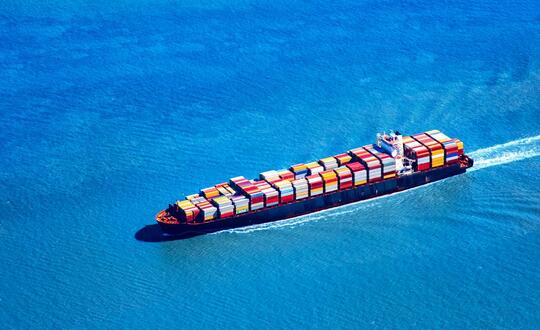Learning from the Francis Scott Key Bridge Collapse: How Equipment Finance Companies Can Protect Themselves in the Event of a Disaster
Jun 28 2024
This client alert is a summary of a recent article written by these authors for Monitor Daily. Click here to read the full article.
The recent collapse of the Francis Scott Key Bridge in Baltimore attracted global concern. For those in the equipment finance industry, the event has raised important questions about protection in case of a similar disaster involving a vessel they own or lease.
In the aftermath of such an incident, vessel owners and financiers need to know how they can protect themselves. Here's a look at some key methods to limit liability, both statutory and non-statutory:
The primary method for a passive financier of a vessel to avoid potential liability is the Shipowner’s Limitation of Liability Act. This act allows individual and corporate vessel owners to limit their liability in connection with an accident to the value of their interest in the vessel and its pending freight so long as the events leading to the liability occur without the owner’s knowledge.
That said, the protections of the act do not apply if the accident, or the circumstances surrounding the accident, were the product of the owner’s negligence. As such, a financier, such as a bank, that holds the title to a vessel but does not control or operate it, can typically limit its liability using the protections of the act, so long as it was not negligent in its management.
The Oil Pollution Act (OPA) provides a framework for governing liability related to oil spills, specifically targeting owners, operators, or charterers of marine vessels. The OPA seeks to hold responsible parties (including vessel owners) liable for the costs associated with oil removal and damages resulting from spills. Claims arising under the OPA are not covered under the limitation of liability provided for by the Shipowner’s Limitation of Liability Act.
However, Section 703 of the Coast Guard and Maritime Transportation Act of 2004 redefined “owner” under the OPA to exclude passive financing entities, introducing a "secured creditor exemption." The secured creditor exemption protects financing sources that hold ownership primarily to secure a financial interest in the vessel, but do not participate in day-to-day operations or decision-making control over the vessel from liability in connection with an accident. This protection extends even after foreclosure (if applicable), provided that the financing source acts swiftly and reasonably to manage the vessel or facility.
In addition to statutory liability-limiting regimes, general indemnity provisions within a lender or passive financier’s documentation can provide significant insulation from liability.
Vessel owners or financing sources should ensure robust indemnity clauses are included in lease or loan agreements, requiring borrowers or charterers to indemnify them and all affiliated persons against any claims related to the vessel’s use or operation. Specific reference to environmental liability should be added to cover a broad range of potential liabilities. The creditworthiness of the charterer or guarantor is crucial for these provisions to be effective.
Additionally, lease and loan agreements should restrict the use of the vessel for storing hazardous materials and should include specific indemnification for breaches of these restrictions. Properly drafted indemnification provisions can serve as an effective catchall for liabilities not covered by statutory protections, as long as the charterer or guarantor can meet their financial obligations.
By combining statutory protections with robust indemnity clauses in legal documents, vessel owners and financiers can significantly reduce their liability in case of a maritime disaster.
Understanding these protections can help you manage risks more effectively and ensure peace of mind in turbulent times.